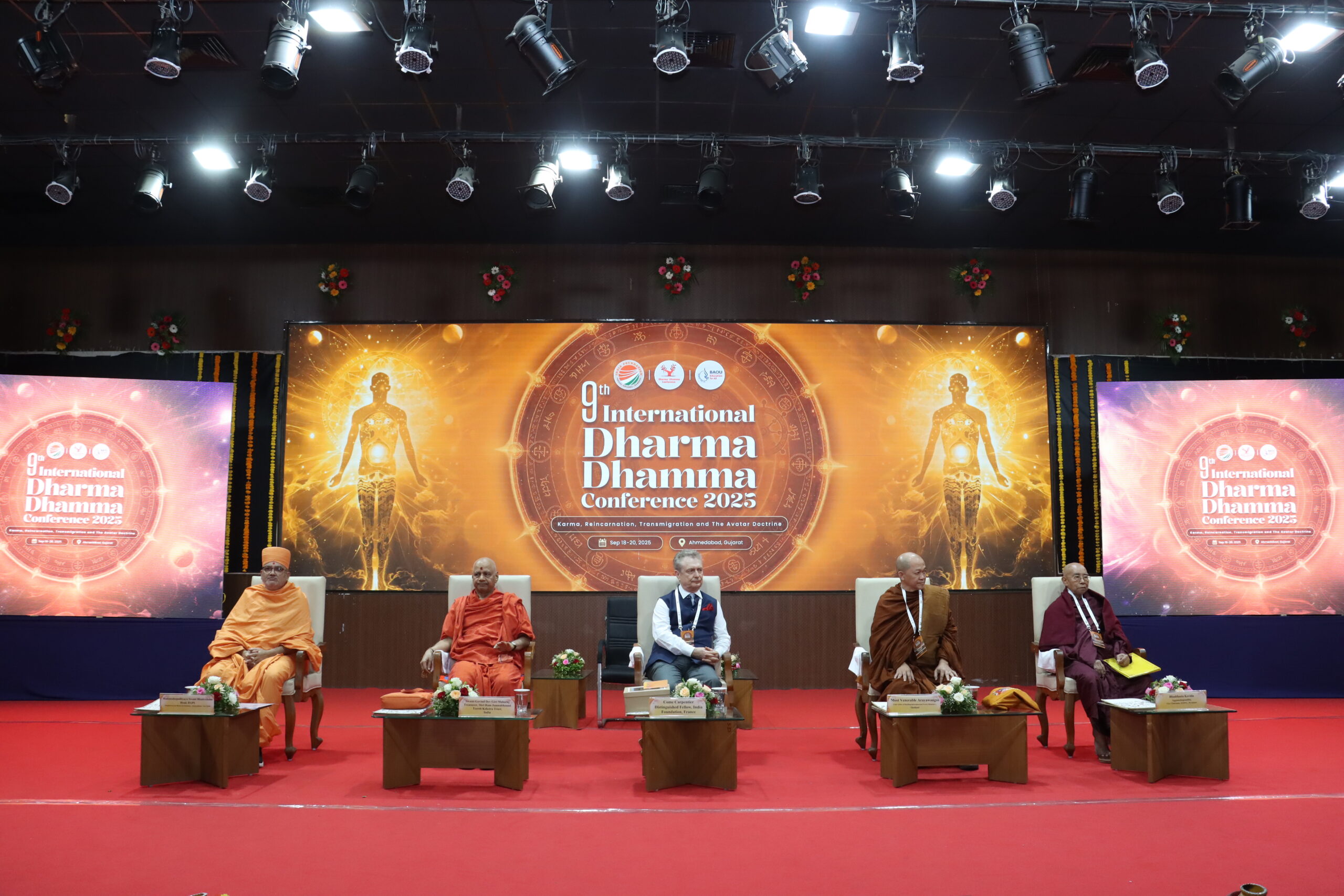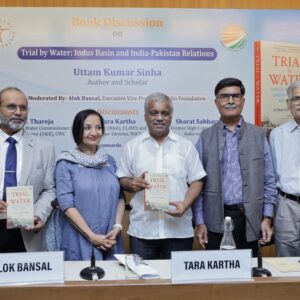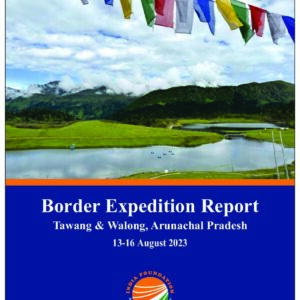Introduction
On July 15, 2024, when Nepal’s President, Shri Ram Chandra Paudel, appointed Shri K P Sharma Oli as the new Prime Minister of the Communist Party of Nepal-Unified Marxist Leninist (CPN-UML)-Nepali Congress (NC) coalition, it marked the appointment of Nepal’s 14th Prime Minister in just 15 years. According to a power-sharing agreement reached on July 1, 2024, Oli and Deuba will alternate as prime ministers, each serving an 18-month term until the next general elections in 2027.
This political reshuffling raises two essential questions: What does this new coalition mean for Nepal’s political stability? And, can this government address Nepal’s pressing economic and geopolitical challenges, particularly in its relations with India and China?
Much like observing a Monet painting from the Impressionist movement—where stepping back allows the whole scene to emerge from short, fragmented brushstrokes—understanding a country’s relationship, particularly with its neighbours, requires a similar approach. Political instability in Nepal is a product of its history and tryst with democracy, which is still a work in progress. A better understanding emerges when we view the events in Nepal in the larger framework of the nation’s recent history and geopolitical challenges.
The Political Precarity and Economic Instability
King Prithvi Narayan Shah’s unification of various principalities in 1768 laid the foundation for a centralised monarchy in Nepal. Since then, Nepal has been ruled by different dynasties until 1951, when, with the end of the Rana regime, the first shoots of democracy emerged, with efforts towards framing a constitution based on parliamentary democracy.[1] Between 1951 and 1958, Nepal prepared for its first general election. During this period, rifts within and outside the political parties and frequent cabinet reshuffles led to chronic instability, with the country seeing five governments.[2] The Nepali Congress won the elections held on February 18, 1959, and BP Koirala was elected the Prime Minister.
Nepal’s democracy dreams were, however, short-lived as King Mahendra banned political parties within a year in a coup and set up a Panchayat system. It took another 30 years to restore democracy. In 1990, a multiparty system was adopted with a constitutional monarchy and a new constitution was introduced. However, the 2001 royal massacre destabilised the monarchy, leading to further unrest. At the same time, Maoist insurgency was growing in the country. Finally, on 28 May 2008, the newly elected Constituent Assembly declared Nepal a Federal Democratic Republic, abolishing the 240-year-old monarchy[3]. In 2015, a new constitution was drafted by Nepal’s Constituent Assembly.[4] There was opposition from various groups, especially the Madhesis and some ethnic groups, who felt inadequately represented and feared their rights would be affected.
Nevertheless, the new constitution was adopted.[5] Since 1948, Nepal has drafted seven constitutions—1948, 1951, 1959, 1962, 1990, 2007, and 2015—illustrating its ongoing efforts to shape a stable political framework. However, the shift to democracy has been marked by frequent changes in government, political infighting, and struggles to establish a stable system, leaving the country in a state of persistent political fragility.
The recent agreement between the Nepali Congress and CPN-UML, in which K.P. Sharma Oli and Sher Bahadur Deuba will alternate as Prime Minister[6], is expected to work only in the short term. Previous coalitions have struggled to provide political stability. For example, the Maoist Centre, led by Shri Pushpa Kamal Dahal (Prachanda), has at various times allied with the Nepali Congress or with the Communist Party of Nepal-Unified Marxist Leninist (CPN-UML), but stability has remained elusive.[7]
The leftist alliance between the CPN-UML and Maoist Centre, formed in 2017, merged a year later to form the Nepal Communist Party (NCP), but that too later broke apart. Due to fragile coalitions and intra-party conflicts, Nepal has witnessed over a dozen changes in government since the monarchy’s dissolution in 2008, with shifting permutations of political alliances. Power-sharing arrangements have remained unstable, as personal rivalries and party competition often lead to internal divisions. Given the history of fractured coalitions and shifting allegiances, it is evident that Nepal’s democracy requires more time to mature.
Much of Nepal’s woes have to do with the state of their economy. In December 2023, the International Monetary Fund (IMF) warned that Nepal’s financial system will face further strain if the country fails to address critical issues raised by the Asia Pacific Group of the Financial Action Task Force (FATF). A field visit by a group from the FATF noted significant shortcomings in Nepal’s adherence to anti-money laundering and terrorist financing standards. What was observed was a failure to criminalise private sector corruption, which exposed deficiencies in compliance mechanisms on issues related to money laundering and terrorist financing.[8] Claims made by the former prime minister, Pushpa Kamal Dahal, in January 2024, of his government’s achievements sounded hollow as the country continues to grapple with rising unemployment,
Earlier in January 2024, when then Prime Minister Pushpa Kamal Dahal repeated a list of his government initiatives as achievements, public resentment was deepening with market anomalies.[9] These claims came when the country faced a trade deficit, unemployment, failing agricultural and industrial production, and declining restaurant and hotel business activities[10].
The agriculture sector is central to Nepal’s economy, as more than 70 per cent of the workforce is involved in agriculture. Yet, the sector generates only around one-third of the country’s GDP. The country that traditionally exported rice has been importing it for the past few years. Nepal imported around 1.4 million tons of rice from India in 2021-2022 (worth USD 473.43 million)[11].
Nepal’s food inflation averaged 7.74 per cent, slightly above the annual targeted threshold of 7 per cent. More significant is the lack of employment opportunities outside the farm sector, which has led to a surge in Nepalis seeking employment abroad. In 2022-23, about 750,000 people left the country for foreign employment, turning many rural settlements into ghost villages or forests.[12]
Nepal and its Neighbours
As a landlocked country between two giant neighbours, geography has significantly shaped Nepal’s relations with its neighbours and the world. Economic realities and deep-rooted historical ties with India are the other significant factors. Nestled in the Himalayas, Nepal shares a border with five Indian states to its South. Its northern border is with Tibet, which is now under Chinese occupation. Being hemmed between India and China, Nepal often balances its diplomatic and economic relationships with both.
Nepal’s bilateral relations with China began in 1950 when China annexed Tibet. China’s involvement with Nepal initially focused on preventing anti-China activities by Tibetans inside Nepal but has evolved over multiple sectors and now includes security cooperation, trade, and infrastructure connectivity. Since 2008, both countries have signed several intelligence-sharing agreements, primarily aimed at curbing pro-Tibet protests in Nepal led by exiled Tibetans. After the 2015 trade blockade by India, Nepal diversified its trade by deepening ties with China and, in 2017, joined China’s Belt and Road Initiative (BRI). As a part of the Belt and Road Initiative (BRI) for Nepal, China introduced a new platform called Silk Roadster. This initiative is anticipated to launch small projects to provide technical training, promote overseas study programs, enhance cooperation between enterprises, and organise cultural exhibitions and exchange visits. Nepalese political parties and social organisations are expected to participate in executing some of these activities. Initially, Nepal proposed 35 projects under the Belt and Road Initiative (BRI), but this number has now been reduced to nine.
Similarly, from 2014 to 2018, China allocated USD 1.53 million each year to Nepal to support the livelihoods of northern Nepal, focusing on health, education, and road infrastructure[13]. China also played a role in Nepal’s internal politics despite its claims of not meddling in the internal affairs of other countries. In 2018, China played a significant role in forming the Nepal Communist Party (NCP) through the merger of the CPN-UML with the Maoist Centre.[14]
Despite the Sino-Nepal rapprochement in the last few decades, the India-Nepal friendship is deep-rooted. Its historical, social, cultural, strategic, political, and economic ties cannot be ignored as they grow with their multifaceted bilateral engagement. As agriculture is central to Nepal’s economy, with over 70% of the workforce engaged in this sector, the two countries have been working on agricultural research, technology transfer, and capacity building. India also plays a significant role in alleviating Nepal’s lack of employment opportunities. About eight million Nepalese citizens live and work in India, while only around six lakh Indians reside in Nepal. In addition, thousands of Nepalese students study in India on a Government of India scholarship. As of date, the Indian government offers 3,000 scholarships to Nepali students annually. The Indian Technical and Economic Cooperation (ITEC) program also provides Nepalese officials and professionals capacity-building opportunities.
As India and Nepal extend visa-free entry, over the years, the movement from one country to another has not only increased tourism (Indians account for about 30% of foreign tourists in Nepal) but bilateral trade (India is Nepal’s largest trade partner). India and Nepal have been working on enhancing trade and market access through infrastructure improvements and new agreements. The Nepal-India Trade and Transit Treaty, revised in 2023, allows Nepal access to India’s inland waterways. Additionally, cross-border connectivity is optimised through integrated check posts at locations like Sunauli and Bhairahawa. Among the many completed and ongoing projects, the new Motihari-Amlekhgunj petroleum pipeline is an example of improved trade infrastructure for trade cooperation, saving significant costs for Nepal.
As it is evident, Nepal, being a landlocked country, is heavily dependent on its neighbours for connectivity and trade. During the COVID-19 pandemic[15], 21 trade points were halted in 2020, of which 14 were recently reopened in May 2024. This prolonged closure severely impacted Nepali traders and workers, particularly in villages near the Nepal-China border that rely on essential commodities and the sale of medicinal herbs to livestock[16]. In contrast, India ensured the supply lines between the two nations remained open during the pandemic. India is also Nepal’s largest trade partner, with bilateral trade exceeding USD 11 billion in FY 2022-2023[17].
Apart from this, Nepal is home to over 6,000 rivers, some of which significantly contribute to the Ganges River system. Against this backdrop, Nepal and India collaborate on water management, flood control, and irrigation projects, such as the Koshi Barrage and the Pancheshwar Multipurpose Project. These efforts are crucial for agricultural productivity in the Indo-Gangetic Plains, which depend on water from Nepal’s rivers.
Another key highlight of India-Nepal bilateral relations is humanitarian assistance, as Nepal is a highly vulnerable country to earthquakes. This is where India’s aid comes into the picture. For instance, the horrors of the 2015 earthquake, which killed nearly 9,000 people and caused massive destruction, are a poignant reminder. India was one of the first respondents to the crisis. With Operation Maitri, India provided and continues to provide rescue, relief, and reconstruction aid.
However, bilateral relations between India and Nepal have not always been marked by consistent cooperation. With political regimes in Nepal frequently changing, their relations also shift, oscillating between periods of close collaboration and moments of tension and conflict. For instance, during his previous terms, PM Oli had a more aggressive stance towards India. In 2020, under Oli’s leadership, Nepal released a new political map that included disputed territories such as Kalapani, Lipulekh, and Limpiyadhura, which escalated tensions with India.
The Indo-Nepal ‘open border’ has been looked at by experts through two lenses- a ‘springboard of opportunities’ with mutual interests or a ‘liberal paradox’[18] as the 1880-kilometre border between the two countries has not been without disputes. The Kalapani area is strategically significant in South Asian diplomacy as it is a tri-junction between India, China and Nepal. As for Lipulekh, the Lipulekh Agreement, signed on 15 May 2015 between Indian Prime Minister Narendra Modi and Chinese President Xi Jinping, has sparked controversy due to its implications for Nepal’s sovereignty. Specifically, Point 28 of the 41-point joint statement allows India to use the Lipulekh corridor without Nepal’s involvement, violating its sovereignty. This agreement is not the first instance that India and China have referenced Lipulekh in a bilateral context without consulting Nepal.
Apart from this, several reports indicate that terrorist groups such as Lashkar-e-Taiba (LeT), Indian Mujahideen, and various insurgent factions are exploiting the open border with Nepal to advance their agenda. Despite the border checkpoints, supplying trained operatives, circulation of fake Indian currency, and smuggling are some of the illegal activities noticed along the border. Additionally, the open border is misused for smuggling subsidised consumer goods[19]. For example, Nepal, which traditionally exported rice, has been importing it for the past few years. It imported around 1.4 million tons of rice from India in 2021-2022 (worth US $473.43 million)[20]. Following this, India banned exports of broken rice. It imposed a duty on exports of various grades of rice amid the threat of El Nio disruption, as well as to boost domestic supplies and calm local prices after a below-average monsoon[21]. However, as Indian media reports, villagers illegally smuggled rice into Nepal along the India-Nepal border.
Conclusion
Though India-Nepal diplomatic relations were established in 1950 with the ‘Treaty of Peace and Friendship’, the cultural and civilisational connections go back to ancient times, to the period of the Ramayana. Today, this spiritual and historical connection between these two countries can be seen cherished with the contemporary sister city agreements signed (Kathmandu-Varanasi, Lumbini-Bodhgaya, Janakpur-Ayodhya) and the India-Nepal Ramayana Circuit. Today, these historic and civilisational relations are cherished and enhanced as India prioritises its relations with neighbouring countries through its ‘Neighbourhood First Policy.’
A stable political system survives crises without internal warfare.[22] Though coalition governments are one of the essential features of a parliamentary democracy, in Nepal, coalitions are unable to sustain themselves, let alone implement long-term plans[23]. Historically, they have been proven unstable, non-dependable and far less effective in addressing the challenges.
Political volatility in Nepal has significantly destabilised the country. The changing government often leads to inconsistent long-term domestic policy plans and foreign relations, particularly with neighbouring countries. The tilt towards China shown by the previous administration of K.P. Oli and the strong pro-India stance seen during Deuba’s previous tenure are examples of the above.
The newly formed coalition government will likely provide short-term stability. Still, the ability of leaders to rise above personal interests and prioritise issues related to governance, especially issues related to employment, is open to question. India- Nepal relations have solid foundations, but Nepal will continue to hedge its bets with China. The recent visit by Foreign Minister Arzu Deuba to India highlighted the potential for enhanced cooperation, but contentious issues like the boundary dispute will need to be settled soon. Nepal’s democracy will, however, continue to be a work in being.
Author Brief Bio: Dnyanashri Kulkarni is a Research Fellow at India Foundation, focusing on the geopolitics of the Indo-Pacific and India’s Neighbourhood. She graduated with a degree in French Literature from Mumbai University and has completed her post-graduation in International Relations. She is also pursuing her PhD from the Jindal School of International Affairs.
References:
[1] Nepal (02/05). (n.d.). U.S. Department of State.
https://20092017.state.gov/outofdate/bgn/nepal/47168.htm
[2] Giri, A. (2021, February 19). Nepal’s democracy challenges. The Kathmandu Post. Retrieved October 18, 2024, from https://kathmandupost.com/politics/2021/02/19/nepal-s-democracy-challenges
[3] Ministry of Foreign Affairs. History of Nepal. https://mofa.gov.np/about-nepal/history-of-nepal/#:~:text=On%20May%2028%2C%202008%2C%20the,Prime%20Minister%20heading%20the%20Government.
[4] Phuyal, H. (2015, September 18). Nepal’s New Constitution: 65 Years in the Making. The Diplomat. https://thediplomat.com/2015/09/nepals-new-constitution-65-years-in-the-making/
[5] Giri, A. (2021, February 19). Nepal’s democracy challenges. The Kathmandu Post. https://kathmandupost.com/politics/2021/02/19/nepal-s-democracy-challenges
[6] Poudel, P. (2024, July 15). Oli becomes prime minister for fourth time, swearing-in today . Kathmandu Post.
[7] PTI. (2024, July 2). Nepali Congress, CPN-UML strike deal to oust PM “Prachanda”; to form new alliance. The Hindu. https://www.thehindu.com/news/international/nepali-congress-cpn-uml-strike-deal-to-oust-pm-prachanda-to-form-new-alliance/article68358405.ece
[8] Post Report. (2023, December 2). Nepali financial system may face further stress, IMF says
https://kathmandupost.com/money/2023/12/02/nepali-financial-system-may-face-further-stress-imf-says#
[9] Pradhan, T. R. (2023, September 1). PM Painting Rosy Picture While Public Frustration Grows. The Kathmandu Post. Retrieved September 1, 2023, from
[10] Khadka, Sarahna (2023, December 24). Economic Slowdown Hits Restaurant Business—And Budding Floriculture. The Kathmandu Post. Retrieved October 18, 2024, from
[11] Jha, Hari B. (2023, January 23) Deepening economic crisis in Nepal. Observer Research Foundation. https://www.orfonline.org/research/deepening-economic-crisis-in-nepal#:~:text=The%20country%20is%20facing%20a,several%20other%20business%20activities%20are
[12] Jha, Hari B. (2024, March 15) Emptying Nepal. Observer Research Foundation. https://www.orfonline.org/expert-speak/emptying-nepal
[13] Jha, H. B. (2024, June 18). Sweeping changes in Nepal-China relations. Observer Research Foundation. Retrieved October 21, 2024, from https://www.orfonline.org/expert-speak/sweeping-changes-in-nepal-china-relations
[14] Jha, H. B. (2024, June 18). Sweeping changes in Nepal-China relations. Observer Research Foundation.
https://www.orfonline.org/expert-speak/sweeping-changes-in-nepal-china-relations
[15] Shakya, D. (2023, April 27). Food shortage in Sankhuwasabha villages as China border closure continues since 2020. The Kathmandu Post. Retrieved October 20, 2024, from
[16] Shakya, D. (2024, May 26). 14 trading points along Nepal-China border reopen. The Kathmandu Post. Retrieved October 20, 2024, from https://kathmandupost.com/national/2024/05/26/14-trading-points-along-nepal-china-border-reopen
[17] MEA. (2024). Annual Report 2023-24. India: Ministry of External Affairs.
[18] Nayak, S. (2023, May 24). India and Nepal’s Kalapani border dispute: An explainer. Observer Research Foundation. Retrieved October 21, 2024, from https://www.orfonline.org/research/india-and-nepals-kalapani-border-dispute-an-explainer-65354
[19] Hans Raj Singh asked: What are the major problems on the Indo-Nepal border and how they can be resolved? | Manohar Parrikar Institute for Defence Studies and Analyses. (n.d.). https://www.idsa.in/askanexpert/majorproblemsontheIndo-Nepalborder
[20] Jha, Hari B. (2023, January 23) Deepening economic crisis in Nepal. Observer Research Foundation. https://www.orfonline.org/research/deepening-economic-crisis-in-nepal#:~:text=The%20country%20is%20facing%20a,several%20other%20business%20activities%20are
[21] Post Report. (2023, December 26). India allows Nepal to import rice on quota basis. The Kathmandu Post. Retrieved October 18, 2024, from https://kathmandupost.com/money/2023/12/26/india-allows-nepal-to-import-rice-on-quota-basis
[22] Heslop, D. A. (1999, July 26). Political system | Types, Components, Functions, & Facts. Encyclopedia Britannica. https://www.britannica.com/topic/political-system/Stable-political-systems
[23] Yerankar, S. (2015). COALITION POLITICS IN INDIA: MERITS & DEMERITS. The Indian Journal of Political Science, 76(3), 402–406. https://www.jstor.org/stable/26534855




